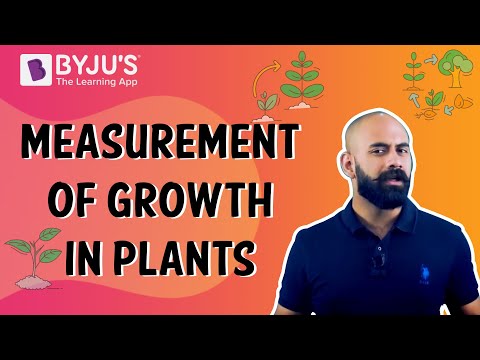Table of Contents
Plant Growth
Growth is a characteristic of a living organism. It is a permanent change which increases the size of the plant. Just like other living organisms, plants also show growth. Growth is an essential property of plants which helps them gain nutrients from places which are far from their position. Growth helps plants compete with each other and also protect their important organs.
Seed germination is an important example of growth in plants where a seed germinates into a seedling, and the new seedling develops into an adult plant through the process of growth.

Phases of Plant Growth
These are the phases of plant growth:
Formative Phase
During the formative phase of growth, growth is dominated by cell division. Cell division leads to a rise of new daughter cells from pre-existing parent cells. Plant cells divide by the process of mitosis, where identical cells are created. It is carried out in two steps:
- Division of Nucleus or Karyokinesis
- Division of Cytoplasm or Cytokinesis
In higher plants, the division of cells begins in the meristematic region.
Cell Enlargement and Differentiation
During this stage, the newly formed cells grow in size, which results in the growth of the tissues and organs. The growth in the size of the cells is due to various factors such as absorption of water, formation and growth of vacuoles and the thickening of the cell wall.”
Cell Maturation
During the maturing process, the cells take a definite shape and structure for a specialised function. This growth leads to the differentiation of the tissues.
Factors Affecting Plant Growth
The important factors affecting the growth of plants include:
- Temperature: Growth is accelerated with the increase in temperature.
- Light: Light intensity, duration of light and the quality of light influence many physiological processes occurring in a plant.
- Water: Water is an essential factor for plant growth. They grow well in a sufficient amount of water. They even respond to the scarcity of water.
- Soil Nutrients: Plants require an adequate amount of nutrients for proper growth. The quality and quantity of nutrients affect plant growth.
- Plant Growth Regulators: Various plant growth regulators such as auxin, cytokinin, gibberellins, etc. are added to plants to regulate their growth.
Differentiation
Differentiation is the process in which the cells specialize into morphologically and physiologically different cells. Mature cells can divide and differentiate again, and this is known as dedifferentiation. This usually occurs in wounded tissues. The parenchyma cells are undifferentiated, and thus, the wound is repaired.
Development
The development includes all the changes that take place during the life cycle of a plant. There are different pathways followed by plants in response to the environment and form different structures. The leaves of a young plant have different structures as compared to the mature plant.
Development is the sum total of growth and differentiation. It is regulated by extrinsic and intrinsic factors.
Growth, differentiation, and development are closely related events. A plant cannot develop if the cells do not grow and differentiate.
The following topics will help you understand more about the growth and development of plants.
- Seed Germination
- Phases of Plant Growth
- Differentiation and Development in Plants
- Plant Growth Regulators
- Seed Dormancy
- Photoperiodism
- Photoperiodism and Vernalisation
For more information on any topic related to plant growth and development, keep visiting BYJU’S website or download the BYJU’S app for further reference.
